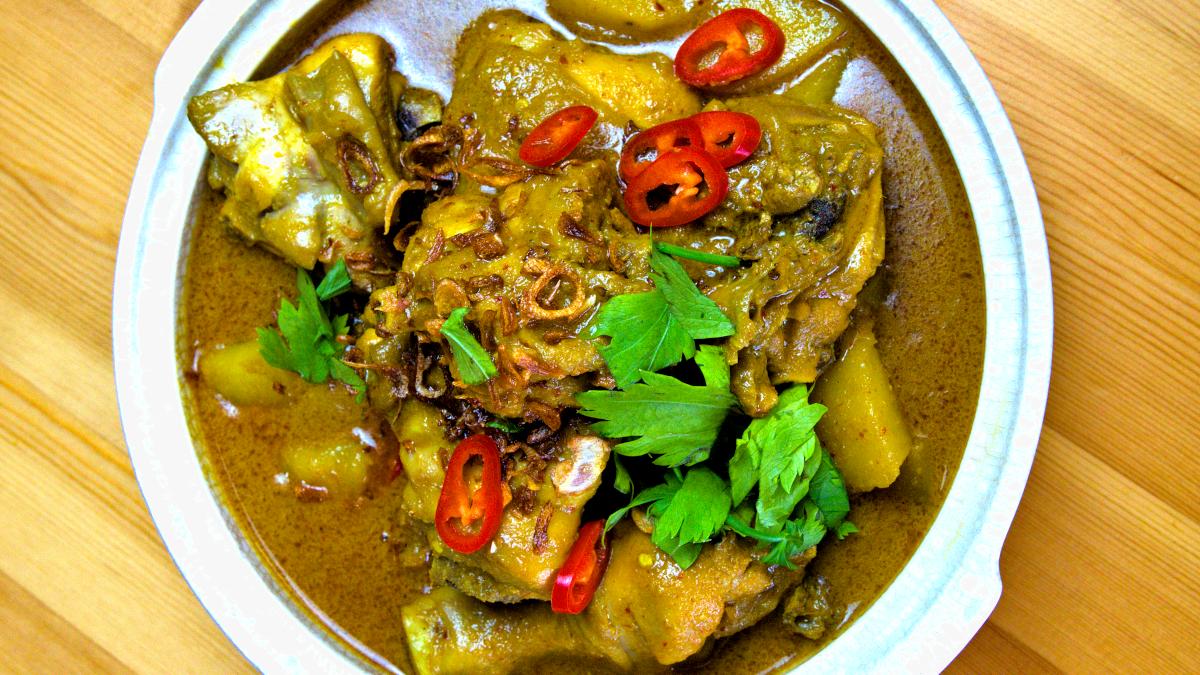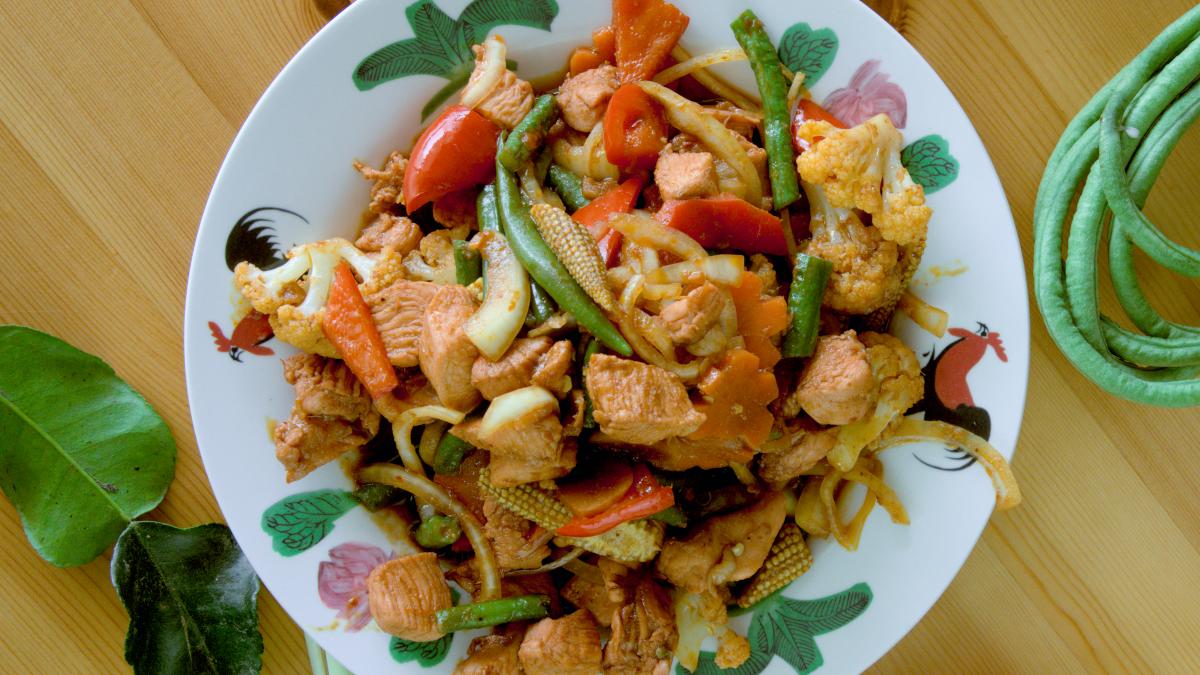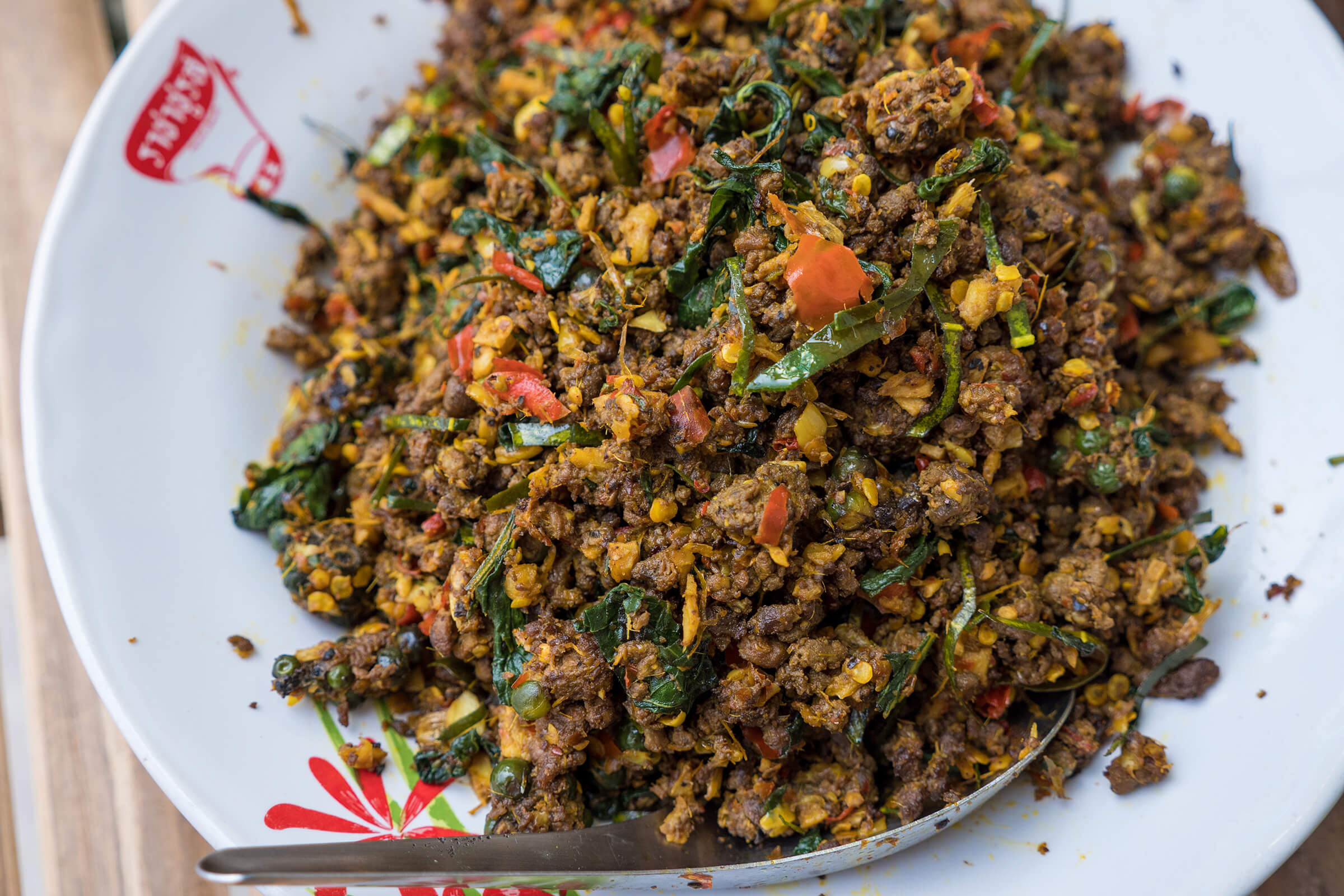Thai yellow curry chicken is a mild and slightly sweet dish, celebrated for being the creamiest of all Thai curries, thanks to the generous use of coconut cream. Its vibrant yellow hue is derived from turmeric and other bright yellow spices. Unlike other Thai curries that feature red chilies, this one stands out with its unique color and flavor profile.
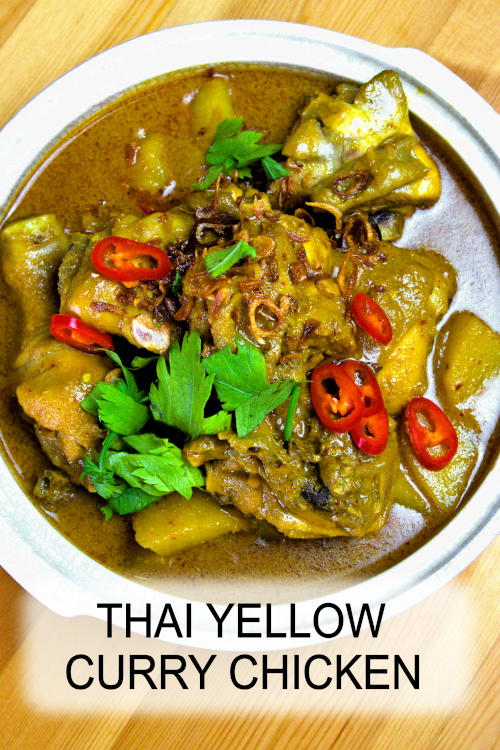
This recipe for Thai yellow curry chicken is divided into two parts: the first outlines how to prepare the curry itself, while the second provides instructions for making the curry paste from scratch. With this guide, you can easily recreate a dish reminiscent of your favorite Thai restaurant at home.
Part 1: Steps to Prepare Thai Yellow Curry Chicken
If you’re using store-bought Thai yellow curry paste, follow these steps to prepare the dish. Instructions for making your own curry paste from scratch will be provided later.
a. Preparation Before Cooking
- Start by cutting the chicken into roughly 1.5-inch pieces. You can use chicken breast or cut a whole chicken into pieces. For added flavor, bone-in, skin-on chicken pieces are recommended. If you prefer a leaner option, chicken breast or thigh meat can be used, with chicken broth added for extra flavor during cooking.
- Slice an onion into thin strips and quarter the potatoes. Peeling the potatoes is optional.
- Prepare one to two tablespoons of tamarind juice. To make the juice, soak a tablespoon of tamarind pulp in hot water for about 10 minutes, then strain it through a fine sieve. Alternatively, store-bought tamarind paste can be used.
b. Slow-Cook the Curry
- Using a traditional method, heat some coconut cream in a pan over low heat until it thickens and bubbles.
- Once the coconut cream has reduced, add the curry paste and sauté until fragrant. If you prefer not to reduce the coconut cream, you can use olive oil to sauté the curry paste instead.
- Add the onion. If you want the onions to melt into the curry for added thickness, add them with the curry paste. If you prefer larger onion pieces, add them after the potatoes to prevent disintegration during cooking.
- When the onion softens, add the chicken to the pot. For optimal flavor, consider marinating the chicken in light soy sauce for 15-20 minutes beforehand. Alternatively, you can pan-fry the chicken pieces until slightly browned before adding them to the curry paste. These steps are optional.
- Add water and the remaining coconut milk to the pan. You can substitute homemade chicken stock for water to enhance the flavor. The amount of liquid will depend on whether you want a thinner or thicker curry.
- If using bone-in, skin-on chicken, cook for at least 10 minutes before adding the potatoes, as larger chicken pieces take longer to cook. If using boneless chicken, you can add the potatoes simultaneously. Waxy potatoes are recommended over starchy ones, as they hold their shape better and absorb more flavor without disintegrating.
- Bring the mixture to a boil, then reduce the heat and simmer until the potatoes are tender and the chicken is cooked through.
Note: You can also incorporate green beans, snap peas, sweet potatoes, and red bell peppers into the curry for added nutrition and flavor.
c. Season the Curry
- While simmering, season the curry with salt, palm sugar, and fish sauce (or brown sugar if palm sugar is unavailable).
- Taste the curry and adjust the seasoning or thickness as needed.
- If you notice excess oil floating on top, feel free to skim some off.
- Add the tamarind juice towards the end of cooking for a flavor boost. Be cautious not to add too much to avoid excessive sourness; a hint of tanginess enhances the overall taste.
- Once cooked, transfer the curry to a serving dish and garnish with fried shallots, red chilies, Thai basil, and coriander leaves. A drizzle of lime juice can elevate the flavor. This dish pairs wonderfully with white or jasmine rice.
Note:
- When using freshly pressed coconut cream, you may notice the coconut oil separating over time. This is less likely with store-bought coconut cream, which is often homogenized. However, the separation is not a concern and can create a visually appealing layer of yellow oil on top of the curry.
- For a more authentic flavor, opt for palm sugar, but brown or regular sugar can be used as substitutes.
- You can prepare this dish in a pressure cooker (Instant Pot) or on the stovetop. Just be sure to use less water in the multi-cooker compared to stovetop cooking.
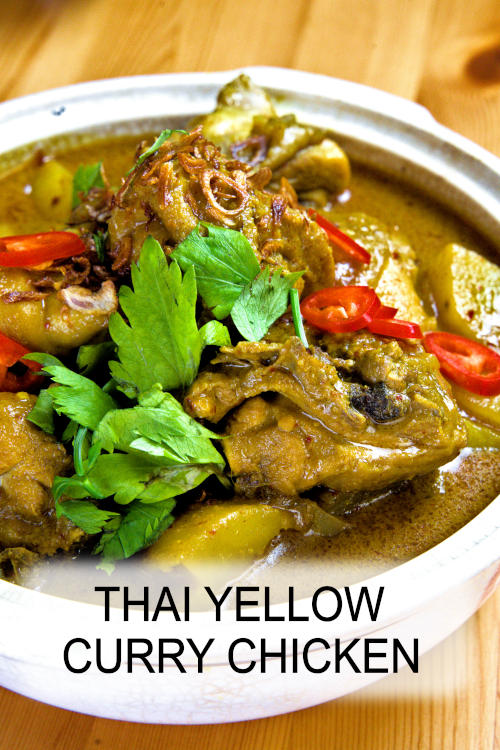
Part 2: How to Make Thai Yellow Curry Paste from Scratch
While I often rely on store-bought yellow curry paste, there are times when I enjoy creating my own for a unique flavor experience. If you share my passion for homemade ingredients, here’s a simple recipe for Thai yellow curry paste. It’s easy to make, but it requires having all the necessary ingredients on hand. If you’re ready to invest some extra time, give it a try!
a. Ingredients
To make Thai yellow curry paste, gather the following ingredients:
- Dry red chilies: Commonly found in Asia, these can be sourced from most Asian grocery stores. For a milder paste, remove the seeds before blending.
- Coriander and cumin seeds: Using whole seeds rather than ground spices will enhance the paste’s freshness and flavor.
- White peppercorns: Whole peppercorns add depth to the paste compared to ground pepper.
- Curry powder: Any curry powder will suffice, but for authenticity, consider Indian or the Baba brand made in Malaysia.
- Lemongrass: Trim both ends and peel the outer sheath, using only the tender bulb. Bash it with a knife and slice it thinly for easier blending.
- Fresh ginger, galangal, and turmeric: Chop these ingredients finely. Note that galangal may not be available everywhere; check Asian food sections in local grocery stores.
- Garlic: Finely chop several cloves of garlic.
- Fermented Thai shrimp paste: This ingredient adds a distinctive flavor, similar to Malaysian Belacan shrimp paste.
b. Method:
- Chop the lemongrass, galangal, ginger, and turmeric into small pieces.
- Wash the dried chilies and cut them into short sections.
- Grind the dried spices separately in a coffee or spice grinder.
- Blend all ingredients in a blender with enough oil until smooth.
Store the yellow curry paste in an airtight container in the freezer for several months or in the refrigerator for a few weeks.
Coconut Cream or Milk
If fresh coconut cream is unavailable, canned coconut milk can be a suitable substitute. However, it’s important to understand the difference between coconut cream and coconut milk, as some coconut milk products are diluted and intended for drinking rather than cooking. When purchasing coconut cream for culinary use, ensure it is undiluted, full-fat coconut milk with a fat content of around 20 to 25%.
Related Thai Cuisines to This Thai Yellow Curry Recipe
If you’re a fan of Thai cuisine, here are some delicious recommendations from this food blog:
- Massaman curry: A mild yet rich Thai curry of Persian origin, adapted into classic Thai cuisine in the southern region.
- For something spicier, try Thai red curry, which can be made quicker with pre-made curry paste.
- Thai Basil Chicken: A quick and flavorful one-pot meal, perfect served over steamed rice with a fried egg on top.

